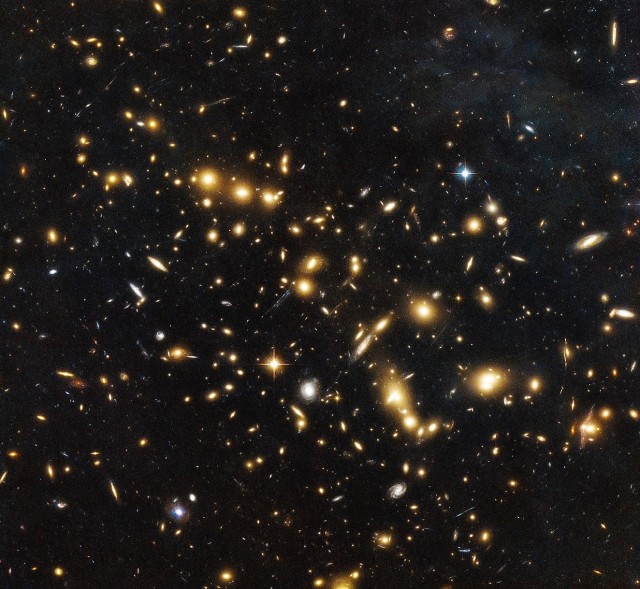 Image is Hubble Spies Glowing Galaxies in Massive Cluster. Credit: ESA/Hubble & NASA, RELICS
Image is Hubble Spies Glowing Galaxies in Massive Cluster. Credit: ESA/Hubble & NASA, RELICS
The main topic of discussion at the April 2018 American Physical Society was the growing crisis in cosmology with the measurement of the Hubble constant.
Very precise determinations of H0 using the Planck satellite’s measurement of the Cosmic Microwave Background Radiation and fitting the data to the standard Lambda Cold Dark Matter model, gives a value of 67.3 ± 1.2 kilometers per second per megaparsec (km/s/Mpc).
However direct measurements of the Hubble flow in the local universe, using redshift vs distance measurements gave H0 a value of 73.2 ± 1.7 km/s/Mpc in 2016.
This recent presentation by Adam Reiss at the Harvard Smithsonian Center for Astrophysics explains nicely the cosmic distance scale and the methods used to measure the redshift vs distance relation. There are three steps in the cosmic distance scale:
- We use geometric parallax to measure distances to Cepheid variable stars in our own Galaxy. This allows us to calibrate the period-luminosity relationship for Cepheid variable stars – one of the standard candles.
- The Cepheid variable period-luminosity relation is then used as a standard candle to measure distances to Type Ia supernova explosions in the nearby universe. This calibrates our second standard candle.
- The Type Ia supernovae are then used to measure the distances of the most remote visible galaxies out to redshift z=1 and beyond.
Plotting the redshift vs distance relationship then gives us our estimate of Hubble’s constant.
The problem is the two methods don’t agree. The discrepancy is several standard deviations, enough to be of serious concern. Attempts to patch up the problems aren’t working.
Hubble telescope cosmic lensing studies support the redshift measurements.
Reiss et al have just released their preprint for their latest Hubble constant estimate using Gaia DR2 data for parallax. The measurements are getting more accurate, but the discrepancy is getting worse.
I am watching this with great interest, but the answer is currently unknown. On the face of it there seems there is something seriously wrong with the Planck-CMB + ΛCDM determination. But what?


You must be logged in to post a comment.